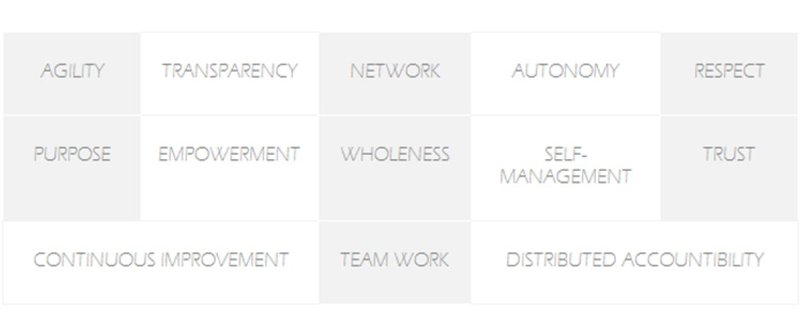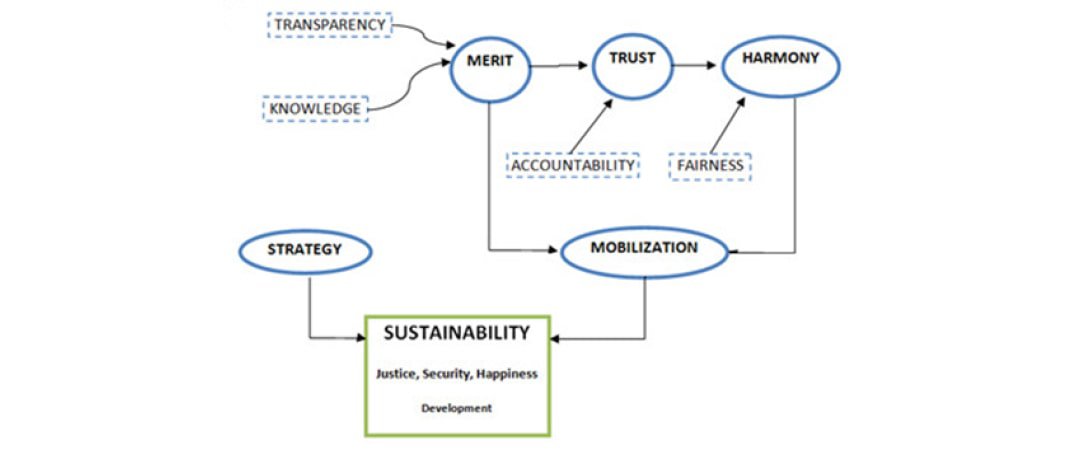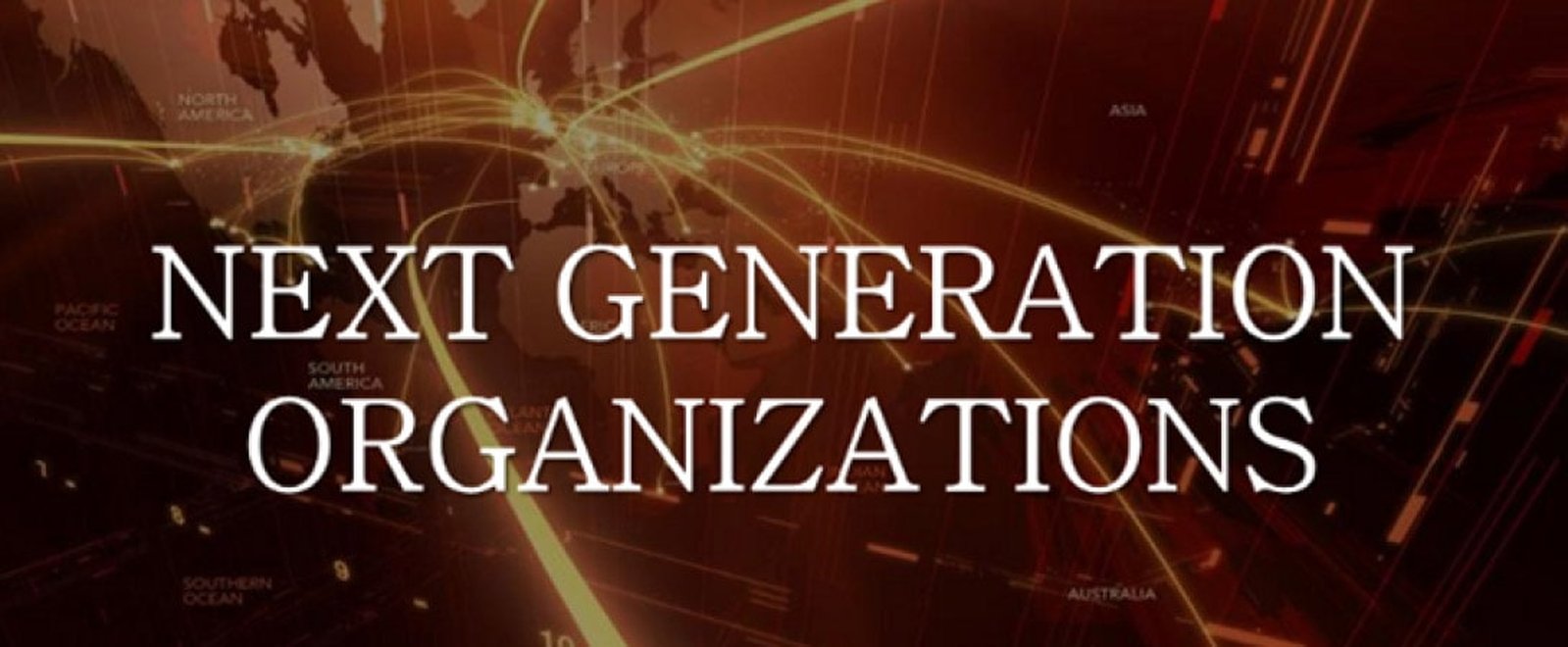The Next Generation Organizations – Part 3
09.08.2019 | Soumyasanto Sen

Frederic Laloux in his Reinventing Organizations mentioned that through the centuries, organizations have made major contributions to humanity’s betterment, including extending life spans, eliminating deadly diseases, making education available, and developing remarkable products and services that improve life and make it more enjoyable. Now organizations dominate the way human society is structured.
Semco Style
Developed over 30 years ago by Ricardo Semler, this management approach organizes wisely around humans instead of smartly around structures and procedures. It is designed to treat adults as adults and put people above organizational modes.
· Promotes building a culture of trust where there is a free exchange of ideas and transparency in
decisions, meetings and planning.
· Advocates for innovation and creativity to be nurtured in their employees and companies.
· Removes control systems and returns accountability and self-management to team members.
These principles go well beyond the notion of self-governance and are interdependent: eliminate one, and the others become far less meaningful. What Semco Style isn’t is a recipe you should simply follow, it is not dogmatic or unchangeable. Semco Style is the result of a lot of trial and error, of taking a few steps forward and a couple back, and it strives to remain a work in progress indefinitely.
"Semco Style is the result of a lot of trial and error, of taking a few steps forward and a couple back, and it strives to remain a work in progress indefinitely."
The Semco Style Institute aims to fuel the ongoing evolvement of the Semco Style of organizing by creating a community of Certified Consultants and Semco Style Change Makers who can learn from each other.
Most people, working in conventionally managed organizations, tend to ignore the imbalances in their personal and professional lives until the moment something goes wrong. It’s a highly reactionary attitude that leads to high-strung situations, deep regrets and a drained return to the workforce. Research invariably shows that people who are unable to dedicate enough time for their personal lives tend to be employees who are physically present, yet mentally absent. And it works both ways: People who work in high stress environments often find all that negativity reflecting on their personal lives, disrupting their familial and social relationships.
For more information, visit: www.semcostyle.org
Sociocracy
Conceptualized by Auguste Comté, Sociocracy can be traced back to 1851. The movement has since remerged in 2014 as Sociocracy 3.0. It enables companies and teams to manage themselves as an organic whole meaning everyone gets a voice in the management of the organization. It is designed to grow effective, agile and resilient organizations of any size, from small startups to large international and national networks.
Sociocracy shares the values of democracy
· freedom and equality, and
· the right and responsibility of self-determination.
But sociocracy doesn’t just state values. It goes deeper. It is a method of organization and decision-making that ensures those values are implemented. Its principles and practices are very different from parliamentary procedure and majority rule. Majority rule can lead to a divided society and promotes competition and dominance instead of cooperation and equality.
Sociocracy is built on seven principles that shape organizational culture. Since the seven principles are reflected in all of the patterns, understanding these principles is helpful for adopting and paramount to adapting Sociocracy 3.0 patterns. Practicing Sociocracy 3.0 helps people appreciate the essential value that these core principles bring, both to individuals and organizations.
Effectiveness: Devote time only to what brings you closer towards achieving your objectives.
Consent: Do things in the absence of reasons not to.
Empiricism: Test all assumptions through experiments, continuous revision and falsification.
Continuous Improvement: Change incrementally to accommodate steady empirical learning.
Equivalence: People affected by decisions influence and change them on the basis of reasons to do so.
Transparency: All information is available to everyone in an organization, unless there is a reason for confidentiality.
Accountability: Respond when something is needed, do what you agreed to and take ownership for the course of the organization.
There is no comprehensive list of sociocratic organizations. Most prefer to be known for their work, not how they make decisions. The now include national and international associations, building and manufacturing companies, health care services, public school systems, villages, private schools, Buddhist monasteries, software companies, residential communities, colleges, a wholesale florist company, veterinary offices, and consulting firms.
In addition to consultants working internationally to help organizations implement the method there are a growing number of websites with resources, guides to training and consultants, and social connections. A network of sociocratic organizations and individuals is being formed to increase general awareness of sociocratic principles and methods.
For more information, visit: www.sociocracy.info and www.sociocracy30.org
Re-Work
re:Work is a collection of practices, research, and ideas from Google and others to help you put people first.
Started in 1998, re:Work is a website sharing curated guides, case studies and research about how businesses like Google and others rethink business to put people first. Their goal is to provide resources to help other organizations design workplaces to make people happier, healthier and more productive.
· Promotes managers acting as role models for continuous growth and improvement.
· Advocates for treating employees like owners.
· Removes unconscious bias replacing it with education, measurement and accountability.
re:Work is organized around ways you can make an impact in your workplace. Each subject contains tools and insights for addressing specific challenges.
· GOAL SETTING
Set goals to align efforts, communicate objectives, and measure process.
· HIRING
Make better hiring decisions through job descriptions, structured interviewing, hiring committees, and more.
· LEARNING & DEVELOPMENT
Empower your employees to grow and develop by making learning part of everyone’s job.
· MANAGERS
Identify what makes a great manager and offer feedback and development opportunities.
· PEOPLE ANALYTICS
Make informed, objective people decisions using science and data.
· TEAMS
Examine team effectiveness and how to foster psychological safety.
· UNBIASING
Reduce the influence of unconscious bias by educating, measuring, and holding everyone accountable.
For more information, visit: www.rework.withgoogle.com
Teal
Introduced in the book Reinventing Organizations by Frederic Laloux in 2014, this movement advances the idea of soulful workplaces that focus on their impact in the world versus management targets. By focusing less on the bottom line and shareholder value and by implementing agile practices, Teal organizations are reaching new heights in financial results and are outpacing their competitors.
The next generation of organizations or teal organizations releases entrepreneurship forces and self-organization to realize a given purpose. It creates pioneer organizations with increased employee engagement, productivity and meaningfulness.
"The next generation of organizations or teal organizations releases entrepreneurship forces and self-organization to realize a given purpose."
Teal organizations exhibit three distinctive characteristics:
1. Self-management– Hierarchy isn’t relevant; neither is consensus. Teal organizations manage their processes through “peer relationships.” Most of these firms provide employees with special training so they can manage their own work.
2. Wholeness — Most Teal organizations believe rationality matters above all. Anything related to the “emotional intuitive and spiritual” side isn’t as important. Teal organizations want evolved, unified employees.
3. Evolutionary purpose — Purpose matters most in Teal organizations: what they do, whom they serve and how they want to evolve.
Teal organizations use an employee-driven advice process as part of each team’s self-management. Anyone in the organization can make decisions that affect the overall company if they first consult those whom the decision will affect and those with expertise on the issue at hand.
For more information, visit: www.reinventingorganizations.com
The New Paradigm
Today, organizations face a radically shifting context for the workforce, the workplace, and the globalized world of business in general. These shifts have changed the rules for nearly every organization, the way we think about culture transformation and the pace at which we must learn to evolve the functions of leadership and management.
All business leaders have experienced these shifts. Business and HR leaders can no longer continue to operate according to old methods. They must now embrace new ways of thinking about their companies, culture, leadership, their talent, and how they approach transformation.
Organizations are focusing on group of people, a “high-performance team” who share a common vision, goals, metrics and who collaborate, challenge and hold each other accountable to achieve outstanding results. The high-performance team is regarded as tight-knit, focused on their goal and has supportive processes that will enable any team member to surmount any barriers in achieving the team’s goals.
Also if we start analyzing the important characteristics for a next generation organization mentioned previously; based on these movements we can easily visualize the most active drivers and characteristics. Most of these movements have common characteristics and their vision is to provide a better organization, a better world.

We need to change how work works. The change is not so easy but not impossible. And all these movements are meaningful when empower people to look at organizations and be able to compare them so that organizations can be valued by their real value creation.
"We need to change how work works. The change is not so easy but not impossible."
The new economy has brought the need to tap people’s curiosity, quest for knowledge and understanding in order to develop a sustainable society. Drivers actively affecting these next generation organization movements like Trust, empowerment, transparency, respect, versatility, passion, knowledge, harmony, merit, accountability many others acts as the major change agents for transforming into a sustainable organization.
In the age of digital, the most important thing for today is to make a people-centric Sustainable Organization (SORG) for the uncertain world. And these active drivers and characteristics can play a vital role in in transforming an organization into a SORG as mentioned above.

Time has come to shine the spotlight on those organizations with a sincere intention to have a positive impact on humanity and to put in the shadow the ones that tend to hide their real impact behind a “green veil”. We need a transparent, simple, speculation-free index that will bring back truth stolen by big corporations which tend to put profit above people, greed above needs and rule of gold above golden rules.
Sustainability has been a hot topic over the last three decades, although always at a very abstract and scientific level, disconnected from the concerns of the common citizen. Despite the various analyses being made by academics worldwide, most conclusions are still not considered as being part of the core of economic development. Sustainability should be considered at the genesis of any organization — business, non-profit, NGOs, government, any type or size of an organization.

In a transparent world, a balanced distribution of the outcome produced by organizations and a stronger economic development for humanity as a whole (regardless of people’s location or activity) can lead to a better life. Similarly, enabling all members of the community to observe organizations and compare them with others, in an accountable and speculation-free system, so that they can determine the real economic value these organizations produce, creates a transparency that will necessarily enable people to build organizations characterized by a strong and positive economic development — balance and stability necessarily lead to more economic value.
We have to enlighten people to get involved in a revolution, leading to a more sustainable model and, in turn, a fairer world. For organizations to become truly sustainable — we believe it is essential to create a new organization model: a more cooperative CEO, a new way for people to cooperate inside the organization and a new way for organizations to be measured by society.
To do so, we have to put under the spotlight organizations with a sincere intention to have a positive impact on any industry and by doing so, to put in the shadow the ones that tend to hide their real impact behind a “green veil”. Those malevolent organizations tend to put profit above people, greed above needs and the rule of gold above golden rules without any concerns regarding the long-term management of their assets.
See also medium.com

